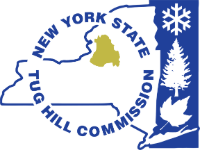A town may officially designate a road as a low-volume road, upon public hearing, and upon the adoption of a local law* by the town board, and classify it according to Classifying Low Volume Local Roads 1996. (Also useful are two later, supplemental documents, the Local Road Research and Coordination Council Manual: Guidelines for Rural Town and County Roads (2012), and Highway Standards for Low-Volume Roads in New York State (2017).)
Any town road in a town where there is less than 150 people per square-mile, and the road carries less than 400 vehicles per day, can be designated as a low-volume road.
Designating a town road as low-volume reduces costs and liability. If a motor vehicle accident occurs on an undesignated road, a community may be held to inappropriate or unspecific design, construction and maintenance standard by a court. The American Association of State Highway and Transportation Officials (AASHTO) currently has two published standards, both of which are considered inappropriate for low-volume, rural roads in the New York State context: Chapter 5 of A Policy on Geometric Design of Highways and Streets, and Guidelines for Geometric Design of Very Low-Volume Local Roads (ADT less than or equal to 400). These standards are either extremely costly to implement, or lack the specific guidance a local highway department with no professional engineering personnel can manage. It is impractical for rural towns to afford this level of design, construction and maintenance. Low volume road designation provides a more realistic standard both in terms of cost and liability.
There are six types of low-volume road designations that can be made, depending on traffic volume and the existing use of the road. These are 1) low volume collector, 2) residential access, 3) farm access, 4) resource/industrial areas, 5) agricultural land access, and 6) recreational land access. These are specific design, construction and maintenance specifications for each type of road.
Once the town passes a local law for the classification, maintenance, and rehabilitation of local rural roads, the town board must approve a low-volume road map (Map Example) and classifications by resolution.
*NOTE: Highway superintendents should establish proposed maintenance regime intentions of road segments. A table example of this is included in the model local law.
